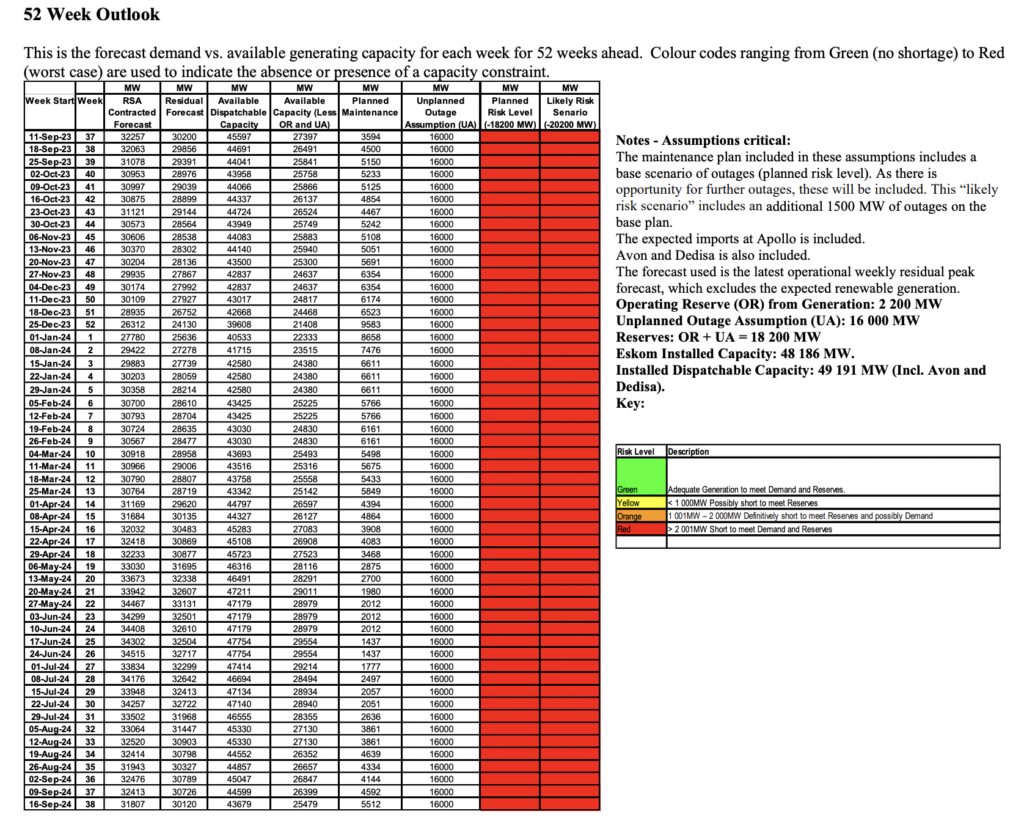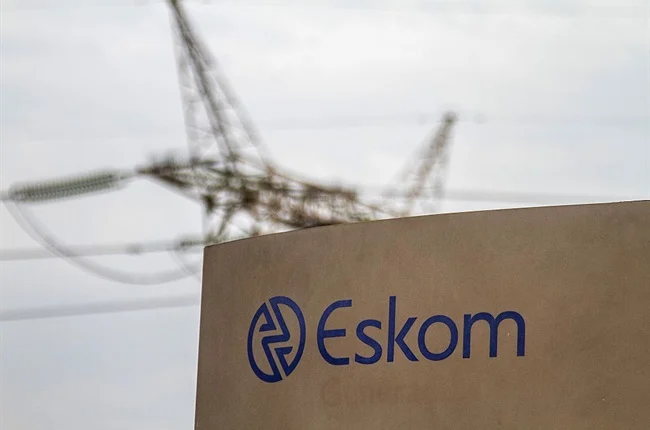South Africa’s electricity utility Eskom has stated that loadshedding is projected to be worse than it has ever been over the next 52-week period.
According to Eskom’s Week 36 system status report, the South African power utility projects that over the next 52-week period, rolling blackouts, known as loadshedding, will be much worse than it has ever been.

The report states that electricity generation capabilities will fail to meet the demand for all 52 weeks, the first time in the 15 years of loadshedding that this will happen. The projection comes at a time when South Africa’s high-ranking officials have been promising less loadshedding in the coming months.
In a cabinet reshuffle in May, President Cyril Ramaphosa created a ministry of electricity to deal with the country’s power woes. Last month, Ramaphosa stated that the work of the ministry would ensure that loadshedding was a thing of the past by 2024.
“Energy has been a great drawback to us, but we are working on it, and we are certain that by 2024, the energy crisis will be over,” he said.
Deputy President Paul Mashatile and minister in the presidency Khumbudzo Ntshavheni have also reiterated the head of state’s words over the last month. But this most recent Eskom report shows that South Africa will have to deal with blackouts at least for the next year.
According to data by the South African Reserve Bank (SARB), loadshedding costs the South African economy R900 million (~$47 million) a day and is also expected to detract two percentage points from the country’s overall economic growth this year.
Furthermore, the SARB also states that load-shedding may add 0.5 percentage points to headline inflation in 2023. This is a result of the high operating costs of running diesel generators being passed to consumers, and higher rates of wastage and spoilage, especially along food value chains, lead to possible goods shortages.
Have you got your tickets to TechCabal’s Moonshot Conference? Click here to do so now!












